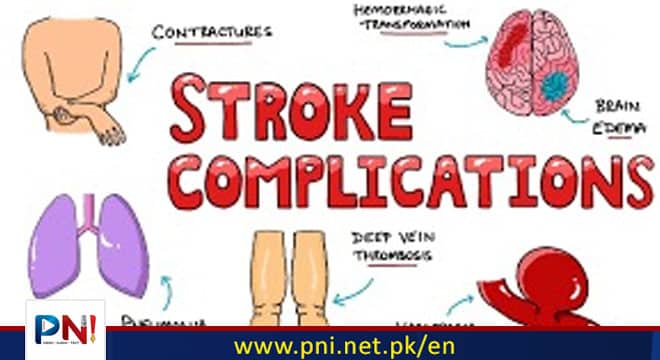ISLAMABAD, Jan 08 (Online): The mechanisms underlying poststroke depression (PSD), a common and debilitating complication of stroke, are unclear. Is it neurobiological, psychosocial, or both?
Two studies offer new insight into this question. In the first, investigators systematically reviewed studies comparing stroke and non-stroke participants with depression and found the groups were similar in most dimensions of depressive symptoms. But surprisingly, anhedonia was less severe in patients with PSD compared with non-stroke controls, and those with PSD also showed greater emotional dysregulation.
“Our findings support previous recommendations that clinicians should adapt the provision of psychological support to the specific needs and difficulties of stroke survivors,” lead author Joshua Blake, DClinPsy, lecturer in clinical psychology, University of East Anglia, Norwich, United Kingdom, told Medscape Medical News.
The study was published online on September 5, 2023, in Neuropsychology Review.
A second study used a machine learning algorithm to analyze blood samples from adults who had suffered a stroke, determining whether plasma protein data could predict mood and identifying potential proteins associated with mood in these patients.
“We can now look at a stroke survivor’s blood and predict their mood,” senior author Marion Buckwalter, MD, PhD, professor of neurology and neurosurgery at Stanford Medicine, California, said in a news release. “This means there is a genuine association between what’s happening in the blood and what’s happening with a person’s mood. It also means that, down the road, we may be able to develop new treatments for PSD.”
The study was published in November 2023 in Brain, Behavior, and Immunity.
‘Surprising’ Findings
“There has long been uncertainty over whether PSD might differ in its causes, phenomenology, and treatability, due to the presence of brain injury, related biological changes, and the psychosocial context unique to this population,” Blake said. “We felt that understanding symptomatologic similarities and differences would constructively contribute to this debate.”
The researchers reviewed 12 papers that sampled both stroke and non-stroke participants. “We compared profiles of depression symptoms, correlation strengths of individual depression symptoms with general depression, and latent item severity,” Blake reported.
They extracted 38 symptoms from five standardized depression tools and then organized the symptoms into nine dimensions.
They found mostly nonsignificant differences between patients with PSD and non-stroke controls in most dimensions, including negative affect, negative cognitions, somatic features, anxiety/worry, and suicidal ideation. Those with PSD more frequently had cognitive impairment, and “work inhibition” was more common in PSD.
But the most striking finding was greater severity/prevalence of emotional dysregulation in PSD vs non-stroke depression and also less anhedonia.
Blake acknowledged being “surprised.”
One possible explanation is that stroke recovery “appears to be a highly emotional journey, with extreme findings of both positive and negative emotions reported by survivors as they psychologically adjust,” which might be protective against anhedonia, he suggested.
Moreover, neurologically driven emotional dysregulation “may similarly reduce experiences of anhedonia.”
However, there was a “considerable risk of bias in many of the included studies, meaning it’s important that these findings are experimentally confirmed before stronger conclusions about phenomenological differences can be drawn,” he cautioned.
Common, Undertreated
Buckwalter said her team was motivated to conduct the research because PSD is among the top problems reported by chronic stroke patients, and for most, it is not adequately treated.
However, “despite the high prevalence of PSD, it is very poorly studied in the chronic time period.” In particular, PSD isn’t “well understood at a molecular level.”
She added that inflammation is a “promising candidate” as a mechanism, since neuroinflammation occurs in the stroke scar for decades, and chronic peripheral inflammation can produce neuroinflammation. Aberrant immune activation has also been implicated in major depression without stroke. But large studies with broad panels of plasma biomarkers are lacking in PSD.
To address this gap, the researchers used a proteomic approach. They recruited 85 chronic stroke patients (mean age, 65 years [interquartile range, 55-71], 41.2% female, 65.9% White, 17.6% Asian, and 0% Black) from the Stanford Stroke Recovery Program. Participants were between 5 months and 9 years after an ischemic stroke.
They analyzed a comprehensive panel of 1196 proteins in plasma samples, applying a machine learning algorithm to see whether the plasma protein levels “could be used to predict mood scores, using either the proteomics data alone or adding age and time since stroke.” The proteomics data were then incorporated into multivariable regression models, along with relevant clinical features, to ascertain the model’s predictive ability.
Mood was assessed using the Stroke Impact Scale mood questionnaire, with participants’ mood dichotomized into better mood (> 63) or worse mood (= 63).
‘Beautiful Mechanistic Model’
Machine learning verified a relationship between plasma proteomic data and mood, with the most accurate prediction occurring when the researchers added age and time since the stroke to the analysis.
Independent univariate analyses identified 202 proteins that were most highly correlated with mood in PSD. These were then organized into functional groups, including immune proteins, integrins, growth factors, synaptic function proteins, serotonin activity-related proteins, and cell death and stress-related functional groupings.
Although no single protein could predict depression, significant changes in levels of several proteins were found in PSD patients. A high proportion (45%) were proteins previously implicated in major depression, “likely providing a link to the underlying mechanisms of chronic PSD,” the authors stated.
Moreover, 80% of correlated immune proteins were higher in the plasma of people with worse mood, and several immune proteins known to have anti-inflammatory effects were reduced in those with worse mood.
And several pro-inflammatory cytokines were implicated. For example, interleukin 6, which has been extensively studied as a potential plasma marker of major depression in non-stroke cohorts, was significantly elevated in patients with worse mood after stroke (P = .0325), “implicating a broadly overactive immune system in PSD.”
“We demonstrated for the first time that we can use plasma protein measurements to predict mood in people with chronic stroke,” Buckwalter summarized. “This means there is a biological correlate of mood but [it] doesn’t tell us causality.”
To tease out causality, the researchers used their own data, as well as information from a literature review of previous studies, to assemble a model of how the immune response following a stroke could change both serotonin and brain plasticity.
“We used the most highly correlated proteins to construct a beautiful mechanistic model of how poststroke depression may work and how it may relate to mechanisms in major depression,” Buckwalter said.
The model “posits an increased inflammatory response that leads to decreased tryptophan, serotonin, and less synaptic function, all of which contribute to symptoms of depression.”
Currently, selective serotonin reuptake inhibitors represent the “best treatment” for people with PSD, but “unfortunately they don’t work for many patients,” Buckwalter noted. The findings “provide clues as to other molecular targets that are candidates novel therapies for poststroke depression.”
Blake commented that the proteomic study “complements the work by us and others interested in understanding PSD.”
Mood disorders “must be understood in terms of the dynamic relationships between structural neurological alterations, cellular and microbiological changes, psychological processes, and the person’s interactions with their social landscape,” Blake said.
New Treatments on the Horizon?
Gustavo C. Medeiros, MD, assistant professor, Department of Psychiatry, of the University of Maryland School of Medicine, Baltimore, said that knowing which individuals are more likely to develop PSD “allows treatment teams to implement earlier and more intensive interventions in those who are at higher risk.”
The findings [of the proteomic study] may also “help clarify the neurobiological correlates of PSD…[which] may help the development of new treatments that target these neurobiological changes,” said Medeiros, who wasn’t involved with either study.
However, he warned, “we should interpret their results with caution due to methodological reasons, including the relatively small sample size.”
Also commenting, Bruce Ovbiagele, MD, MSc, MAS, MBA, MLS, professor of neurology, UCSF Weill Institute for Neurosciences, California, said the proteomic study has some “clear limitations,” including the lack of Black or African American patients in the cohort, which limits generalizability, “since we know that Black and African American people are disproportionately affected by stroke and have very high rates of PSD and very severe presentation.”
The study by Blake et al. “was interesting because the phenotype of depressive symptoms after stroke differs from what’s seen in the general population, and the authors figured out a way to better understand the nuances of such differences,” said Ovbiagele, who wasn’t involved with either study.
He said he was also surprised by the finding regarding anhedonia and suggested that the findings be replicated in a study directly comparing patients with PSD and patients with depression from the general population.
The study by Bidoki et al. was funded by AHA/Paul Allen Foundation, the Leducq Stroke-IMPaCT Transatlantic Network of Excellence (MSB), the Wu Tsai Neurosciences Institute (MSB), the Alfred E. Mann Foundation (NA), and an Alzheimer’s Association Research Fellowship to one of the authors. No source of funding was listed for the study by Blake et al. The authors of both studies, Medeiros and Ovbiagele, declare no relevant financial relationships.
Follow the PNI Facebook page for the latest news and updates.








